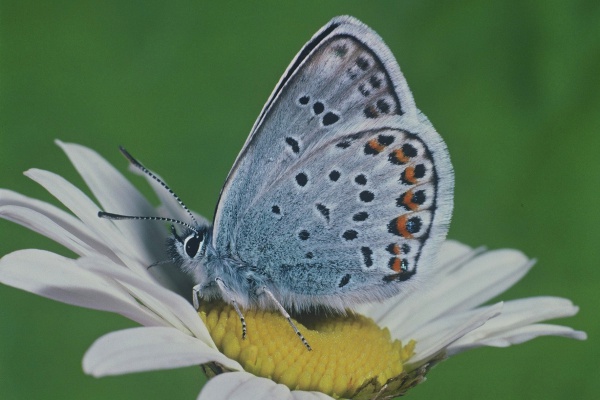Facts About Silver-studded blue
The silver-studded blue butterfly, scientifically known as Plebejus argus, is a captivating member of the Lycaenidae family. These butterflies are easily recognizable by their vibrant blue wings, which are bordered with black and white and adorned with silver spots on the hindwings, earning them their name.
These butterflies are distributed across Europe and Asia, with extensive studies conducted particularly in the UK. Unfortunately, their numbers have declined significantly in the UK due to habitat loss and fragmentation.
One fascinating aspect of P. argus is its mutualistic relationship with ants, specifically Lasius niger and Lasius alienus. These ants protect the butterflies from predators and parasites. The butterflies are quite sedentary, typically flying less than twenty meters a day and remaining within a limited home range. They thrive in various habitats such as heathland, mossland, and limestone grassland, where they lay their eggs on host plants abundant in these environments.
Male and female silver-studded blue butterflies exhibit sexual dimorphism. Males have royal blue wings with silver spots, whereas females are generally brown. The larvae are green with a dark stripe and can grow up to 1.3 centimeters in length. This sexual dimorphism plays a crucial role in mate selection.
P. argus is found in the Palearctic region, but its population in the UK has notably declined. These butterflies prefer habitats like heathland, mossland, and limestone grassland, each with specific plant preferences. Their mutualistic relationships with ants are vital for their protection and reproductive success.
Conservation efforts are essential to save the silver-studded blue butterfly. Habitat loss and fragmentation have severely impacted their populations, so protecting their habitats and preserving suitable environments is crucial for their survival.

 Ireland
Ireland